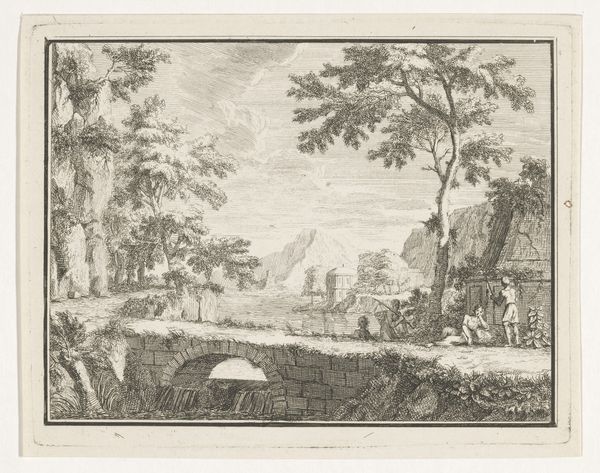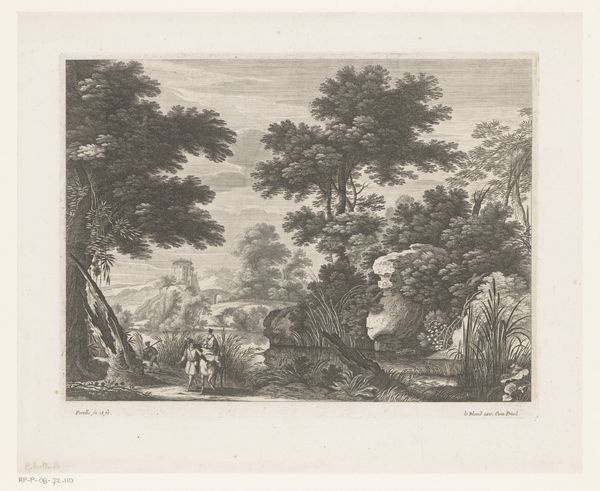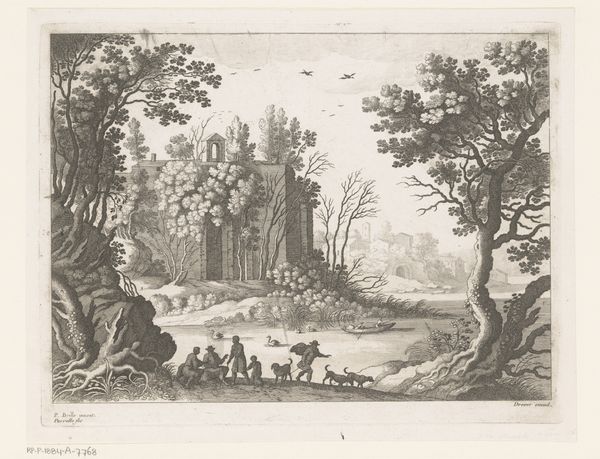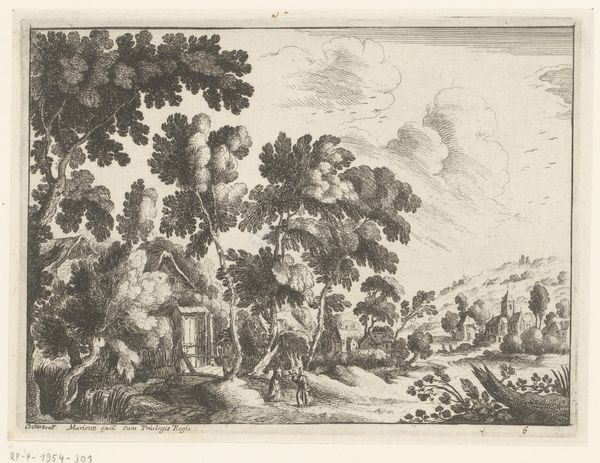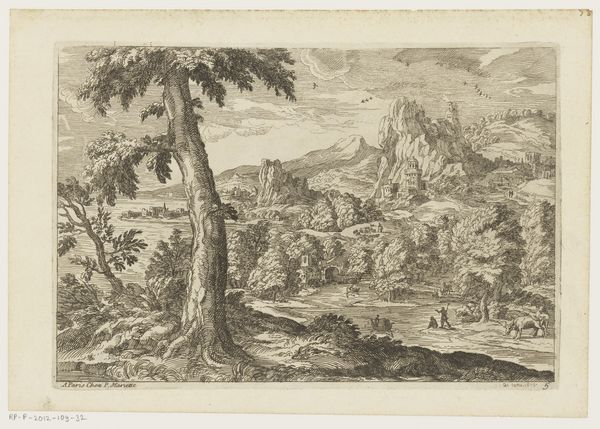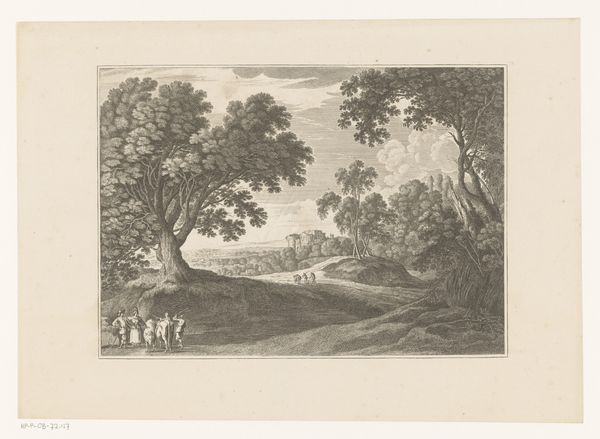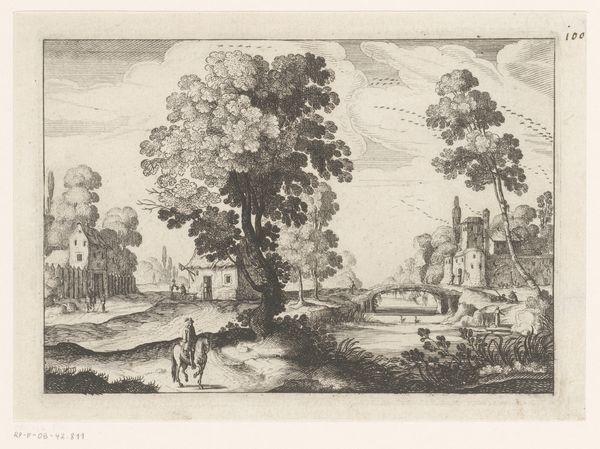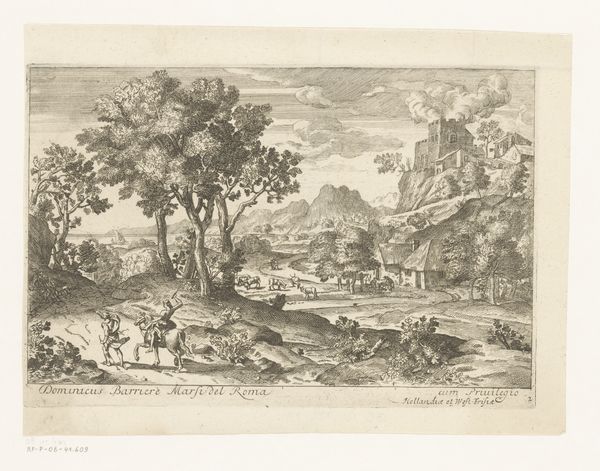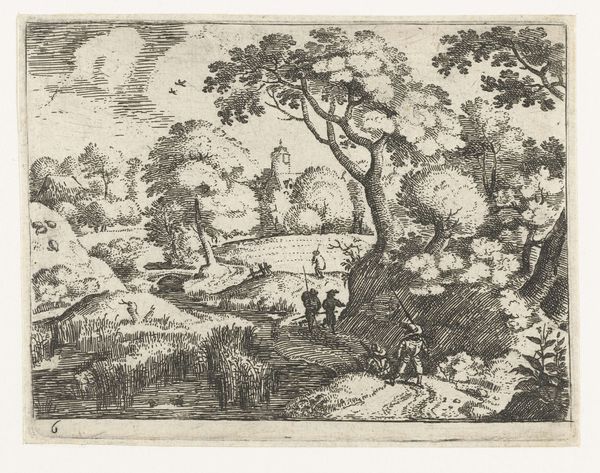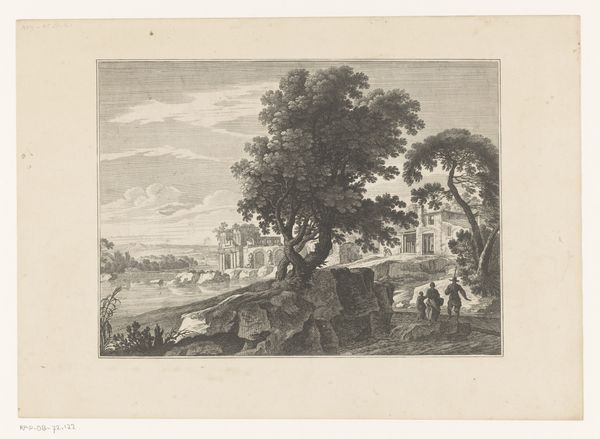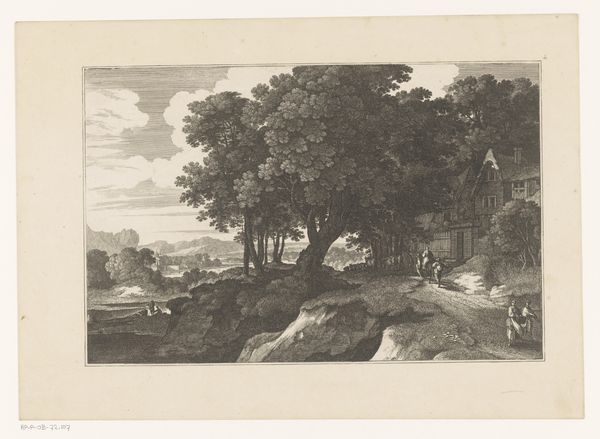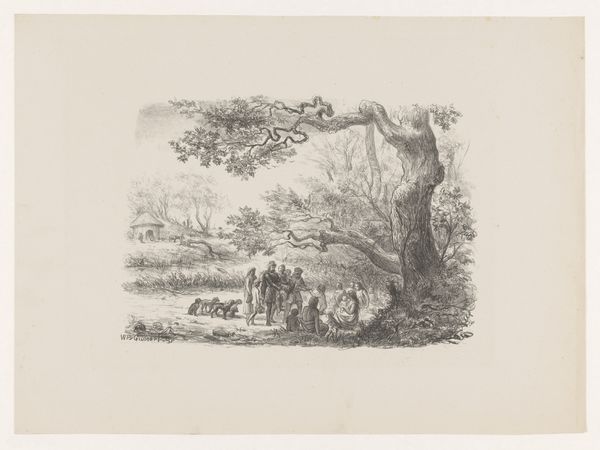
print, engraving
#
baroque
# print
#
old engraving style
#
landscape
#
figuration
#
forest
#
history-painting
#
engraving
Dimensions: height 257 mm, width 324 mm
Copyright: Rijks Museum: Open Domain
Curator: This is "Landscape with the Preaching of John the Baptist." The artwork, dating back to between 1620 and 1686, is by Nicolas Cochin. It's an engraving, currently held here at the Rijksmuseum. Editor: Immediately, I'm struck by the almost theatrical use of light and shadow. It creates a powerful, almost stage-like setting in this seemingly tranquil forest. The landscape is clearly important. Curator: It is. Cochin situates a religious narrative within a broader engagement with the natural world. Consider the context of the time: landscape art was gaining prominence, and religious art had to navigate changing social values during that baroque period. Editor: Right, and John the Baptist, traditionally shown as a lone, almost severe figure, is placed within a dense web of humanity, right in the center of the forest, among all these trees. This reminds me of the classical iconography around hermits. It seems Cochin has deliberately made his version less austere. What statement could Cochin have made through such use of iconography? Curator: Perhaps Cochin is inviting the viewer to question conventional modes of authority. Instead of isolation, we see community and dialogue. Placing such an important and radical figure centrally encourages people of that time to understand religion, maybe in a different form of worship that does not require such strict conventions and authority. Editor: Yes, notice how the landscape itself almost seems to listen. The trees lean in towards John, and that creates this sense that nature itself bears witness to his teachings, and perhaps endorses this challenge to authority. Curator: I see this print as an attempt to bridge the gap between established religious doctrine and a growing appreciation for the natural world, resonating with a period of religious and social transition in Europe. Editor: Ultimately, Cochin offers an inviting space for contemplation by situating familiar symbolic religious motifs in a grand landscape with delicate execution, no matter our time. The natural world and humanity create the perfect harmony, together.
Comments
No comments
Be the first to comment and join the conversation on the ultimate creative platform.
